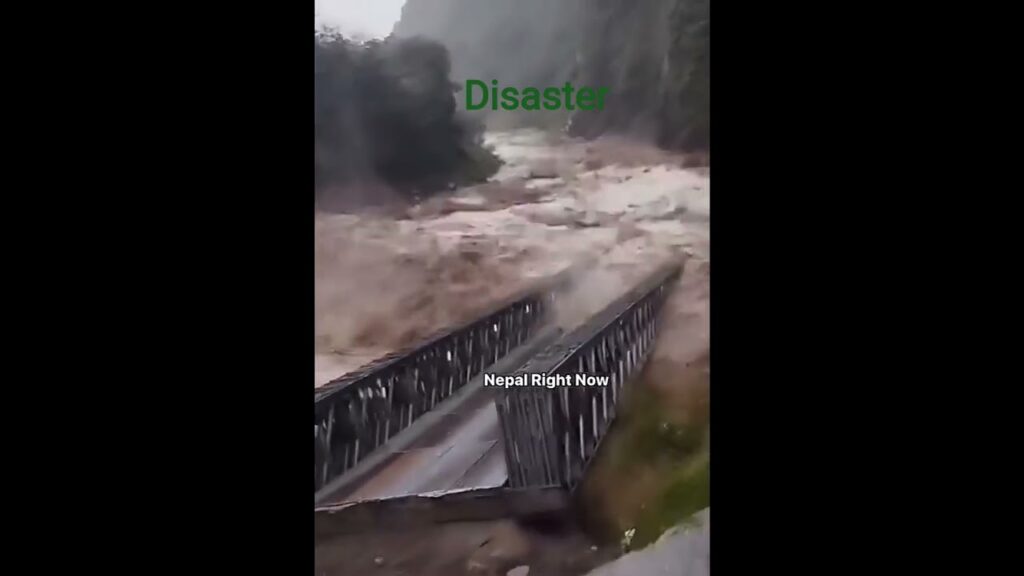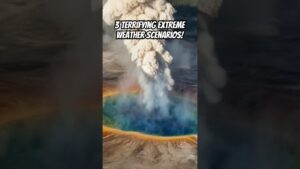
:Floods and deforestation in Nepal are closely linked, as deforestation increases the risk and severity of floods. Here’s how they are connected and their impact:
Causes of Floods in Nepal
Heavy Monsoon Rains – Nepal receives intense rainfall during the monsoon season (June–September), leading to river overflows and flash floods.
Glacial Melting – Climate change is causing glaciers in the Himalayas to melt faster, increasing river flow and flood risks.
Landslides – Deforestation weakens soil stability, leading to landslides that block rivers and cause sudden flooding.
Poor Drainage Systems – Rapid urbanization without proper drainage increases flood risks in cities.
Deforestation and Its Impact on Floods
Loss of Natural Barriers – Trees and vegetation absorb rainwater and prevent soil erosion. Deforestation reduces this capacity, increasing surface runoff.
Soil Erosion – Without tree roots to hold the soil, heavy rains wash away the topsoil, filling rivers with sediment and making them overflow.
Landslides – Tree roots help bind the soil; when trees are cut down, slopes become unstable and prone to landslides, which can block rivers and cause floods.
Increased Sedimentation – Deforestation leads to more silt and debris in rivers, reducing their water-holding capacity and making them flood-prone.
Consequences of Floods and Deforestation in Nepal
Loss of Lives and Property – Every year, floods destroy homes, farmland, and infrastructure, displacing thousands.
Agricultural Damage – Flooding washes away fertile soil, reducing crop yields and affecting food security.
Biodiversity Loss – Forest destruction harms wildlife habitats, threatening endangered species.
Health Issues – Floods cause waterborne diseases like cholera and dysentery due to contaminated water sources.
Solutions and Preventive Measures
Reforestation Programs – Planting trees and restoring forests help reduce soil erosion and absorb excess rainwater.
Sustainable Land Use – PromFloods and deforestation in Nepal are closely linked, as deforestation increases the risk and severity of floods. Here’s how they are connected and their impact:
Causes of Floods in Nepal
Heavy Monsoon Rains – Nepal receives intense rainfall during the monsoon season (June–September), leading to river overflows and flash floods.
Glacial Melting – Climate change is causing glaciers in the Himalayas to melt faster, increasing river flow and flood risks.
Landslides – Deforestation weakens soil stability, leading to landslides that block rivers and cause sudden flooding.
Poor Drainage Systems – Rapid urbanization without proper drainage increases flood risks in cities.
Deforestation and Its Impact on Floods
Loss of Natural Barriers – Trees and vegetation absorb rainwater and prevent soil erosion. Deforestation reduces this capacity, increasing surface runoff.
Soil Erosion – Without tree roots to hold the soil, heavy rains wash away the topsoil, filling rivers with sediment and making them overflow.
Landslides – Tree roots help bind the soil; when trees are cut down, slopes become unstable and prone to landslides, which can block rivers and cause floods.
Increased Sedimentation – Deforestation leads to more silt and debris in rivers, reducing their water-holding capacity and making them flood-prone.
Consequences of Floods and Deforestation in Nepal
Loss of Lives and Property – Every year, floods destroy homes, farmland, and infrastructure, displacing thousands.
Agricultural Damage – Flooding washes away fertile soil, reducing crop yields and affecting food security.
Biodiversity Loss – Forest destruction harms wildlife habitats, threatening endangered species.
Health Issues – Floods cause waterborne diseases like cholera and dysentery due to contaminated water sources.
Solutions and Preventive Measures
Reforestation Programs – Planting trees and restoring forests help reduce soil erosion and absorb excess rainwater.
Sustainable Land Use – Promoting agroforestry and banning illegal logging can reduce deforestation.
Flood Control Infrastructure – Building embankments, dams, and proper drainage systems can help manage floodwaters.
Early Warning Systems – Using technology
to predict floods and inform communities can save lives.
Deforestation and flooding are major environmental challenges in Nepal, but with proper conservation efforts and sustainable development, their impacts can be minimized.
source



